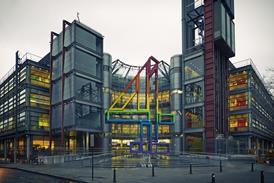BVE: Canon’s recently released C300 came out on top in the battle of the cameras at BVE 2012 at Earl’s Court last week.
With neither NAB nor IBC falling between the November launch of the camera and BVE, the London trade show was the first opportunity for many of its 16,000 visitors to get their hands on the device, which caused the most buzz.
Visitors didn’t have to search too hard to find one of the 8.3 megapixel Super 35mm cameras to play with. Resellers and hire firms including CVP, Promotion and Prokit all featured the camera on their stands, alongside Canon itself.
Director of photography Philip Bloom, who returned to BVE after a three-year hiatus, spoke about the C300 and Sony’s NEX-FS100 in his talk about large-sensor cameras at CVP’s stand, where some 200 people were squeezed into an area designed for 20.
Elsewhere, there was a large crowd at the Olympus stand, where a scantily clad woman was showered with ping pong balls to demonstrate the slow-motion photography of the i-Speed PL camera, which was making its UK debut.
The camera, which has a 1280 x 1024 sensor and can shoot at full resolution to 2,000fps, has a sensor with an ISO rating of 1,600.
Across the hall, Vision Research demonstrated its own slow-motion device, the Phantom Miro M120 camera, which captures 1920 x 1200 resolution at 730fps and 1920 x 1080 at 800fps.
In the Broadcast Meets IT seminar room, BBC North controller of production and the broadcaster’s lead for the Digital Production Partnership Mark Harrison delivered a talk titled ‘Why Are We Still Not Tapeless?’
“There is no guilty party,” he said. “Producers, suppliers, broadcasters - none are at fault for not getting [to tapeless] as quickly as we might have wished to. But the deficiencies of all three have interacted to make the process painful.”
The industry appears to be responding to the DPP’s work and the effect of its efforts could be seen on the show floor, where visitors to the Root 6 stand were shown workflows for broadcast deliverables using the cross-broadcaster group’s new standard for file-based delivery of programmes.
Root 6’s management, editing, storage and archive system used DVS, Cinegy, Avid, Apple, XenData and Object Matrix kit, together with delivery technology from Aspera.
Transcoding to the DPP’s new MXF-based format with AVC Intra was handled by the latest version of Root 6 Technology’s filebased platform, ContentAgent.

























No comments yet